Showing 221–230 of 1179 results
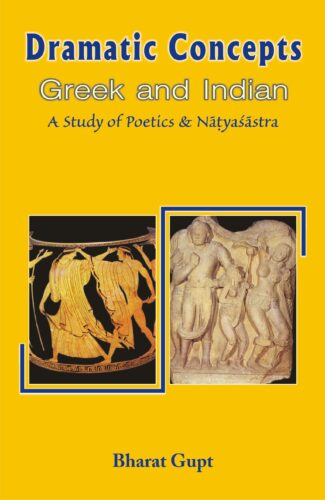
This study offers a fresh approach in comparing ancient Greek and Indian dramatic theories by reconstructing Greek/Indian performances to highlight their similarities and differences. This revaluation will help in shaping of newer modes of performance.
This study offers a fresh approach in comparing ancient Greek and Indian dramatic theories. Instead of treating the Poetics and the Natyashastra as Western and Eastern viewpoints, it places them within the broad framework of ancient Indo-European culture and the art of sacred drama (hieropraxis). It demonstrates that hieropraxis was basically different from post-Renaissance European drama which was entirely secular in content and Realistic in presentation. The Poetics and the Natyashastra on the contrary, belonged to theatres which pleased both gods and men, and which used semiotised gesture, dance, music, and dialogue to create a highly ornate theatrical reality. The book aims at comparing not only the concepts as propounded by Aristotle and Bharata Muni, but also attempts to reconstruct the Greek and Indian performances to highlight their similarities and differences. In view of the increasing constrains imposed on artistic endeavours by commercial pre-occupations in todays world, this stimulating revaluation of the two major classical stage-crafts will go a long way in the discerning and shaping of newer modes of performance. Concepts like anukarana, dharmi, abhinaya, itivritta, mimesis, muthos, melopoiia, katharsis and rasa, etc., as revisited and expounded here, can be seen as means of creating dramatic shows which go beyond message and entertainment to provide sublimer experiences.
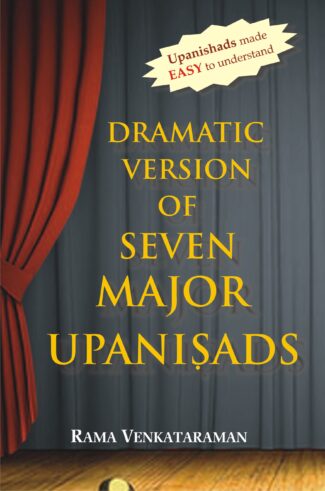
This book an English translation of the Tamil text expounds the wisdom contained in seven of the principal Upanishads in the style of short dramas. English transliteration and meanings of the Sanskrit verses are also included. The language is simple to follow which makes the Upanishads easily understandable by even a layman.
The Upanishads reveal the nature of true vidya: it is the knowledge which leads to the understanding of Brahman which alone is the Reality in the world of appearances. The dramas by Shri Mani Iyer based on the Upanishads render the meaning of the Upanishads in an interesting and captivating manner so that a wider audience can gain from the Upanishadic insight.
This book presents an English translation of Mani Iyers seven Upanishadic dramas, originally in Tamil, and includes English transliteration of the original Sanskrit verses. The dramas pertain to seven of the major Upanishads: Kena, Ishavasya, Prashna, Mundaka, Mandukya, Taittiriya and Katha. With reference to each drama, there is an introduction that reveals the major questions raised by the Upanishad, the manner in which the play proceeds, the nature of the story, its characters, and the conclusion of the play. The translation is simple to follow and possesses a rare clarity.
Because of the simple language and the clear meanings of the Upanishadic verses, this book will be valuable to readers in general, students in particular, and to those interested in knowing what our Upanishads contain and intend to convey.

This book an English translation of the Tamil text expounds the wisdom contained in seven of the principal Upanishads in the style of short dramas. English transliteration and meanings of the Sanskrit verses are also included. The language is simple to follow which makes the Upanishads easily understandable by even a layman.
The Upanishads reveal the nature of true vidya: it is the knowledge which leads to the understanding of Brahman which alone is the Reality in the world of appearances. The dramas by Shri Mani Iyer based on the Upanishads render the meaning of the Upanishads in an interesting and captivating manner so that a wider audience can gain from the Upanishadic insight.
This book presents an English translation of Mani Iyers seven Upanishadic dramas, originally in Tamil, and includes English transliteration of the original Sanskrit verses. The dramas pertain to seven of the major Upanishads: Kena, Ishavasya, Prashna, Mundaka, Mandukya, Taittiriya and Katha. With reference to each drama, there is an introduction that reveals the major questions raised by the Upanishad, the manner in which the play proceeds, the nature of the story, its characters, and the conclusion of the play. The translation is simple to follow and possesses a rare clarity.
Because of the simple language and the clear meanings of the Upanishadic verses, this book will be valuable to readers in general, students in particular, and to those interested in knowing what our Upanishads contain and intend to convey.

Dreams are generally viewed as displays of the subconscious and the unconscious, which know everything of the past, the present and the future, and constitute an interrelation between these. This book presents the viewpoints of scientists, psychologists and various religious and cultural traditions on the phenomenon of dreams.
This book is a study of the mysterious phenomenon of dreams. Dreams have fascinated mankind for ages. Civilisations over time and varied cultures have attempted to interpret the occurrence and meaning of dreams in different ways. Various theories have been extended from time to time to interpret this phenomenon. Dreams are generally viewed as displays of the subconscious and the unconscious which know everything of the past, the present and the future and constitute an interrelation between these.
The book analyses the states of thought, the sleep cycle and occurrence of dreams, presenting viewpoints of various religious and cultural traditions like the tantric view, that of the Guiana Indians, the Korean tradition, and so on. It discusses the views of scientists and psychologists on dreams, examining the beliefs of each school the Freud school, Jung school, Hall school among others in detail. It classifies dreams in different ways and deals with aspects of contemplation, emotions, and feelings in dreams. It also takes up dream healing and numerology, explaining how one can understand the structure of a dream and its significance and use it for achieving something in life. It contains accounts of dreams experienced by famous personalities in history which were closely linked to their real lives.

Dreams are generally viewed as displays of the subconscious and the unconscious, which know everything of the past, the present and the future, and constitute an interrelation between these. This book presents the viewpoints of scientists, psychologists and various religious and cultural traditions on the phenomenon of dreams.
This book is a study of the mysterious phenomenon of dreams. Dreams have fascinated mankind for ages. Civilisations over time and varied cultures have attempted to interpret the occurrence and meaning of dreams in different ways. Various theories have been extended from time to time to interpret this phenomenon. Dreams are generally viewed as displays of the subconscious and the unconscious which know everything of the past, the present and the future and constitute an interrelation between these.
The book analyses the states of thought, the sleep cycle and occurrence of dreams, presenting viewpoints of various religious and cultural traditions like the tantric view, that of the Guiana Indians, the Korean tradition, and so on. It discusses the views of scientists and psychologists on dreams, examining the beliefs of each school the Freud school, Jung school, Hall school among others in detail. It classifies dreams in different ways and deals with aspects of contemplation, emotions, and feelings in dreams. It also takes up dream healing and numerology, explaining how one can understand the structure of a dream and its significance and use it for achieving something in life. It contains accounts of dreams experienced by famous personalities in history which were closely linked to their real lives.
DRISHTIPAAT, is a glimpse into the life and times of the three great saints of Ishvar Ashram, Nishat, Srinagar Kashmir. This book makes their presence felt all around us. The pictorial journey, takes the reader, in the serene and benign presence of the great Shaiva master Shree Lakshman Joo, Devi Sharika Ji and Devi Prabha Ji. Their drishti (glance), through the pictures, and shlokas make readers drench with the Divine Grace and their blessings.
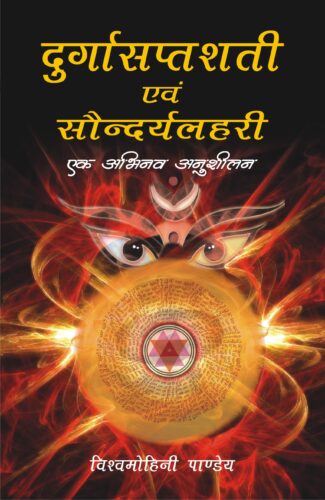
Since the inception of Creation, woman has always been adored as a symbol of strength (Shakti) and beauty (Saundarya). In reality, the importance of woman begins in the foremost ancient text of the Rigveda in its Vak Sukta. Upanishads also mention Usha Devi as eternally young woman. This trend continues in Puranas too. History of ancient India has been described in Puranas, and sanskriti (culture) shown therein is the sanskriti of a comman man. Markandeya Purana, one of the eighteen Mahapuranas, consists a collection of thirteen chapters in 700 shlokas named Durgasaptashati, depicting that form of Goddess Bhagavati, the Universal Mother, which explores womans dignity with its constructive power.
In the same tone, Saundaryalahari mentions about Bhagavati who is simply Kundalini, and her depiction as aesthetically beautiful woman is manifested by Shankaracharya. This scripture reveals that the worshipping power inspires us for continuous creation, and discusses about philosophical (Tantric), cultural and literary trinity. In this deliberation antiquity manifests itself into modernity and ultimately into science. When meaningfulness of word-Brahman takes divine form, then it becomes humanity and there itself we realize the concept of Shiva-Shakti. The light of Brahman exists in this world. This exact realisation of Brahma is the subject-matter of this book.
The sources of Indian culture are found in Darshan and Tantra. This expounds the expression of Tantra philosophy in the comparative appreciation of Durgasaptashati and Saundaryalahari. This book appreciates poetry, culture and literature and at the same time, there is also beautiful assimilation of aesthetic sense, Tattva-Darshan and literature.
Since the inception of Creation, woman has always been adored as a symbol of strength (Shakti) and beauty (Saundarya). In reality, the importance of woman begins in the foremost ancient text of the Rigveda in its Vak Sukta. Upanishads also mention Usha Devi as eternally young woman. This trend continues in Puranas too. History of ancient India has been described in Puranas, and sanskriti (culture) shown therein is the sanskriti of a comman man. Markandeya Purana, one of the eighteen Mahapuranas, consists a collection of thirteen chapters in 700 shlokas named Durgasaptashati, depicting that form of Goddess Bhagavati, the Universal Mother, which explores womans dignity with its constructive power.
In the same tone, Saundaryalahari mentions about Bhagavati who is simply Kundalini, and her depiction as aesthetically beautiful woman is manifested by Shankaracharya. This scripture reveals that the worshipping power inspires us for continuous creation, and discusses about philosophical (Tantric), cultural and literary trinity. In this deliberation antiquity manifests itself into modernity and ultimately into science. When meaningfulness of word-Brahman takes divine form, then it becomes humanity and there itself we realize the concept of Shiva-Shakti. The light of Brahman exists in this world. This exact realisation of Brahma is the subject-matter of this book.
The sources of Indian culture are found in Darshan and Tantra. This expounds the expression of Tantra philosophy in the comparative appreciation of Durgasaptashati and Saundaryalahari. This book appreciates poetry, culture and literature and at the same time, there is also beautiful assimilation of aesthetic sense, Tattva-Darshan and literature.
Philosophy in this set of two volumes is a cognitive activity par excellence. Cognition is that the language expresses and it reveals intelligible objects/beings of language and the meaning to which our philosophical reflections, investigations, analysis and interpretation are not only based on but are confined to. The work is fit for satisfying the intellectual hunger of those who are sick of reading the same metaphysical, ontological, theological and epistemological descriptions in different books of history of philosophy, Indian and Western, to those searching a philosophy free from our captive thinking and also an innovative vision to meet out the new challenges in philosophy. Concentrating on cognition as it flashes by language the book analyses, discusses, interprets and critically argues most of the philosophical issues and their responses by Indian and Western philosophical traditions well conclusively.
Unlike linguistic and analytic philosophies, the book is a philosophy of language. Unlike meaning-centric philosophies popular in the East and West, the language-centric approach of the book is based on the expressive nature of language. Based on cognition as it flashes, on active theory of knowledge and action-oriented view of language and its meaning, it reflects on problems, doubts, paradoxes and queries for clarity and resolve, and on that basis, utility and future of philosophy as well.
Against philosophy as subjective and objective thinking, it is a cognitive reflection par excellence. These volumes cover the courses of philosophy prescribed in the universities and colleges useful for scholars and students and those who want a fresh perception to come up with the new challenges in philosophy.
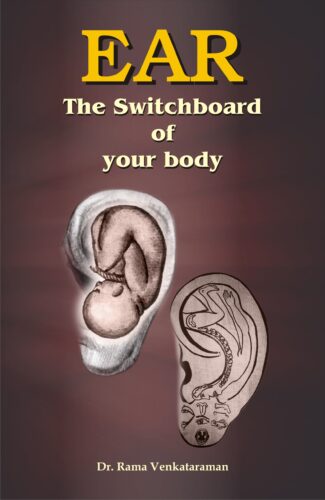
This attempts to examine how the corresponding ear-points can help in improving the body’s working. It also provides detailed explanations with tables and diagrams of various disorders that can be cured by using the acupuncture methods.
Among the many reflexology parts a human body has, ear is most unique and significant.
Ear is rich in nerve endings and placed at outer rim of the skull, vibrating with energy. In the ear body’s representation corresponds to a child in mother’s womb, curled in an upside down manner. Because of this the ear cure mechanism is also effective in curing problems originated in the womb.
Ear acts like the body’s radar reflecting its working precisely. When these reflex points are activated the sensitive ear nerves carry the return cure reflexes as electromagnetic waves to the organs and body parts, the body responds quickly and diseases are cured.
This is a wonderful effective nature cure through its remote control operation.
This book will serve as a guide to variety of readers especially those interested in traditional medicine and healing systems.
Nature’s gift to mankind.
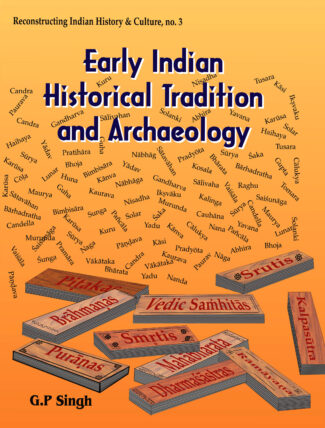
Surveying the whole extent of Itihasa-Purana and sifting facts from myths, the book reconstructs millennia of ancient Indias political-cultural history (pre-Bharata war days to about ad 1200), with chronological details of all kingdoms that ruled.
In mankinds history, Indias is the longest literary tradition so ancient that it cannot be illustrated either by con- temporary books or from monuments. The Rigveda, indisputably the oldest literary work, was written at a time when many a great, old-world civilization lay in the wombs of futurity. And almost equal is the antiquity of the Puranas which, considered as the fifth Veda, figure distinguishedly among the traditional sources: Vedic Samhitas, Brahmanas, Srutis and Smritis, Dharmashastras, epics (the Ramayana and the Mahabharata), tantra manuals, and myriad Buddhist and Jaina texts, that have helped historiographers unravel the landmarks in the subcontinental civilization. Bulky and often crowded with legendary, religious and philosophical matters of various kinds, the PURANAS record the genealogies of Hindu deities, the reigns of the Manus, and chronicles of Solar, Lunar and other ancient dynasties. Professor G.P. Singh tries afresh to establish their historicity, surveying the whole extent of Itihasa-Purana: the early Indian historical tradition, founded on the Puranic literature. Meticulously sifting facts from myths, legends, and philosophic reflections in this monumental corpus of yore, the book reconstructs millennia of ancient Indias political and cultural history: from the pre-Bhrata War days to about 1200 ad (the post-Harsha period) with both genealogical and chronological details of all dynasties/ kingdoms that rose and fell in different regions of the Indian subcontinent. Contextually, the author analyses threadbare the Puranic evidence to also review the date of the Mahabharata War. In thematically exploring the historicity of all different Puranas, Dr. Singh is at pains to show how far the Puranic accounts are validated by other traditional writings on the one hand, and archaeological evidence on the other. With prolific bibliographic references and a number of chronological genealogical tables, his book will interest the scholars/ researchers of Indology, ancient Indian history and archaeology.
| There are no products |